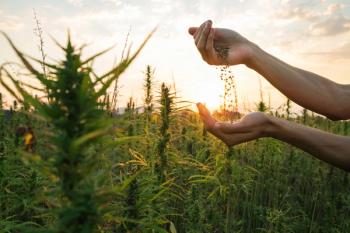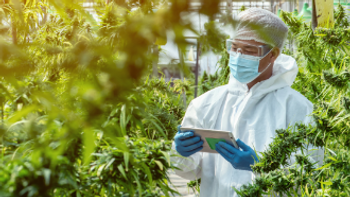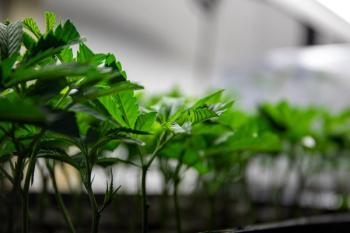
Cannabis Science and Technology
- April 2021
- Volume 4
- Issue 3
Gaining Deep Knowledge About Cannabis Cultivation: How and Why
A review of the changing attitude and knowledge gap in cannabis cultivation and more.
This article reviews the changing attitude and knowledge gap in cannabis cultivation; strategies for cannabis cultivation management; determining the physiological maximum of the cannabis plant; how to achieve desired results; the effect of production conditions on yield and cannabinoid content; and more.
The recent legalization drive has resulted in a change in the cannabis cultivation landscape. With more and more countries decriminalizing cannabis, the demand for medical and recreational cannabis with higher tetrahydrocannabinol (THC) levels is growing.
This change in cannabis legal status is triggering a shift from the production of varities low in the cannabinoid THC to ones with higher levels of THC. Sensing an opportunity exists there, several new cultivators are also trying their hands to grow cannabis on a commercial scale.
Due to the controlled substance status of cannabis in the past, restrictions have halted scientific research on the plant. As a result, little knowledge about the impact of critical factors such as variety, plant density, light intensity, and so forth are available. Figuring out the real effects of these factors can help to optimize cannabis plant output as well as cannabinoid content.
Strategies for Cannabis Cultivation Management
Determining the Physiological Maximum of the Cannabis
The lack of scientific knowledge about the crucial cultivation factors results in lower plant output and cannabinoid profile. This created a yield gap where cultivators were unable to reach the maximum possible output level.
The corrective measures begin with determining the physiological maximum yielding capacity of the plant. At the same time, it is equally important to find out conditions and
Unfortunately, scientific research that can explain factors contributing to the yield gap is limited. To date, only limited studies have examined the genetic structure and inheritance of chemotype to find their effects on the cannabis yield. It is only recently that research has started investigating the impact of production methods such as the use of microbial inoculants and the role of light intensity on yield and cannabinoids profiles.
How to Achieve the Desired Results?
The use of adequate production conditions can help cannabis cultivators to enhance their productivity. Are you aiming to achieve a high yield, but don’t know what factors play a role? Don’t worry, we have done some digging to figure out what factors can affect your yield and cannabinoid content.
To better explain the effects of production conditions on yield, scientific studies have examined the impact of these conditions on a single plant or plant within a square meter.
- The research shows that high plant density is associated with a fall in the yield and THC content. Interestingly, when higher plant density comes with high temperature, it leads to an increase in the accumulation of THC.
- Fertilizer type (such as Canna Terra versus slow-release fertilizer) affects the THC per square meter but does not influence yield per plant. In other words,
the choice of fertilizer may affect the cannabinoid profile but leaves no effect on the plant output. - If you want to optimize both THC concentration as well as yield, apply liquid organic fertilizer during the vegetative growth stage.
- The yield per square meter increases when a light lamp with higher output per Watt, such as high pressure sodium (HPS) lamps, is used. A rise in light intensity to 600 W/m−2 enhances the accumulation of THC and cannabidiol (CBD) in the cannabis plants.
The research demonstrates that light intensity, quality, source, and photoperiod play a role in the yield and cannabinoid concentration of the cannabis plants. The studies also found that a variation in the light spectrum influences the quality and output of the cannabis plant. Therefore, selecting lights with the appropriate light spectrum is essential to achieve optimum yield and cannabinoid concentration. Light-emitting diode (LED) lights with high efficiency, long life, and flexible spectrum settings can make the best choice to illuminate your plants.- The length of the flowering period is another factor that influences the yield and THC accumulation per square meter. You can get extra cannabis yield along with higher THC accumulation by prolonging the flowering period of your cannabis plants.
Improvements Using Breeding Technologies
The cannabis plants demonstrate significant variation in their stalk height, seed size, fiber length, photochemical concentrations, and sensitivity to day length. Hemp breeders are using molecular markers to develop strains that offer greater yield and higher cannabinoid concentration.
Capitalizing on modern sequencing, quantitative trait locus (QTL) mapping, and genome-wide association, researchers are discovering key markers for next-generation strains. Cannabis researchers are also looking at genome editing technologies to transform cannabis cultivation.
The modern biotechnologies, particularly
Despite the success in transforming callus, the ability to derive callus from a variety of tissue types and cultivars, and the transformation of cannabis roots, researchers are facing a persistent challenge to regenerate plants from the transformed callus and explant tissue.
Any future development in that direction has the potential to trigger a revolution in cannabis cultivation as well as the way we experience the products.
About the Author
MIA VOLKOVA is a cannabis scientist and content director at
How to Cite this Article
M. Volkova, Cannabis Science and Technology 4(3), 44-45 (2021).
Articles in this issue
over 4 years ago
Why Dispensaries Need In-House Testingover 4 years ago
The Evolution of Ethanol Extraction Methods in CannabisNewsletter
Unlock the latest breakthroughs in cannabis science—subscribe now to get expert insights, research, and industry updates delivered to your inbox.



